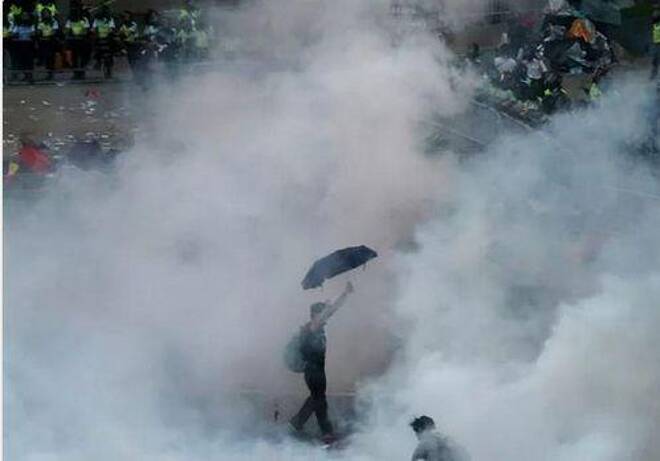Advertisement
Advertisement
The Umbrella Movement’s Potential Domino Effect – Part 1
By:
The Umbrella Movement's Potential Domino Effect - Part 1 So what exactly is going on in Hong Kong? There have been protests, counter-protests,
The Umbrella Movement’s Potential Domino Effect – Part 1
So what exactly is going on in Hong Kong? There have been protests, counter-protests, arrests, pepper spray, tear gas, and disturbing images of bloodied students amassing in the city’s business district.
It all started with a decision handed down by China back in August to essentially control Hong Kong’s elections via a pool of candidates that only include vetted and Beijing-backed contenders. Wait, isn’t Hong Kong part of China? Well, it’s complicated.
Hong Kong’s roots are indeed in Ancient China but after the First Opium War (1839-1842), it became a British Crown Colony. A day after Pearl Harbor and as part of the Japanese offensive across the Pacific, it was invaded by Japan and occupied by the Japanese from late 1941 to 1945. Upon Japan’s surrender, it went back to British rule and British Hong Kong would endure some 50 more years until 1997. China resumed control of Hong Kong in July of that year, the result of a British and Chinese agreement that turned over the region in exchange for China’s promise to maintain its free market system. It was dubbed “one country, two systems” out of deference for Hong Kong’s rising role as a commerce center and gateway to Asian trade.
It’s ironic that the Hong Kong protests taking place in the Central Business District are called “Occupy Central.” Despite its ongoing volleys of “occupation,” Hong Kong has enjoyed unprecedented autonomy. It has its own currency, its own flag, its own laws, its own postal system, a distinct dialect, and even its own Olympic Team.
Hong Kong has greatly benefited from its strategic proximity to China and its role as an active seaport. It has been further bolstered by the very Western incentives of free trade, low tax rates, limited regulation, and all other things bestowed by economic freedom. In just 50 years, the small island of just over 7 million people has managed to register a per capita income equal to that of the United States and is now a major tech sweet spot and international financial center. Ranked as one of the freest economies in the world, Hong Kong has played a critical role as mediator and negotiator in ferrying the substantial flow of Chinese trade and investment.
Perhaps most important of all, Hong Kong has given China critical access to global markets and functioned as a stable environment for trade. With a fair court system and pro-business protections, Hong Kong has helped Chinese companies raise billions in capital and loan financing while their homeland has remained historically isolated and closed-off.
Hong Kong on the other hand, is a gregarious global player that has managed to maintain its individual character, its special freedoms, and its political autonomy … until now. The protesters see Beijing as pulling back and reneging on that age-old promise of “one country, two systems” and while brandishing their pepper-spray shielding umbrellas, these determined “Umbrella Revolutionaries” are demanding full suffrage.
This is part 1 of a 2 part article researched by Scott Carter of Lear Capital. Scott is a leading expert in gold investing and a well known analysts of the global markets. Check Scott’s background out or learn more about Lear Capital at their online portal. Learn how protests in China has an effect on gold and other precious metals, such as silver and platinum.
About the Author
Barry Normanauthor
Did you find this article useful?
Latest news and analysis
Advertisement
